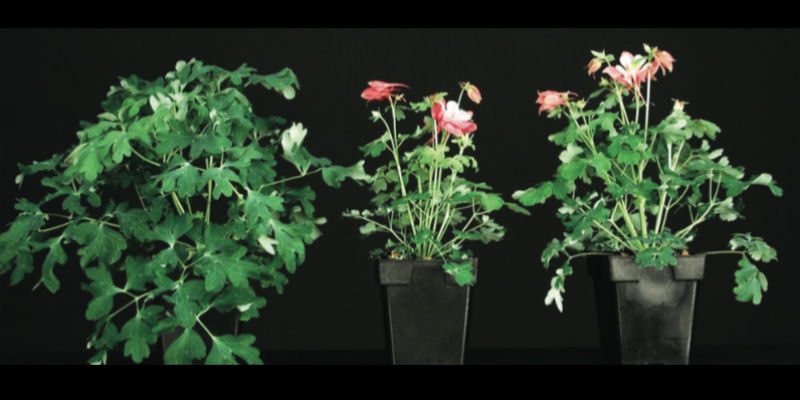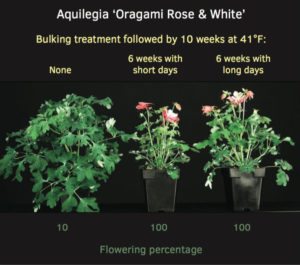
Juvenility in Perennials
Plants have two general phases of development, a vegetative phase and a flowering phase. The vegetative phase is sometimes referred to as the juvenile phase, which is a period of time when plants are not capable of flowering. Plants started by seed have a juvenile phase and they must develop to a certain maturity before they attain the capacity to flower.
Plants propagated by cuttings, division or another asexual technique typically do not have a juvenile phase because the mother plants from which they originated were already mature, and this maturity is typically transferred to the offspring. However, if plants are propagated from young mother plants, or there are both juvenile and mature phases of growth on the same plant (such as English ivy), plants propagated from juvenile growth will still be juvenile.
For most bedding plants, the juvenile phase is short, usually less than one month after seeds germinate. There is greater variation in the length of the juvenile phase for herbaceous perennials and it can last for a few months or longer. For woody perennials, the juvenile phase is typically even longer and can last from a year or two to a decade or longer. Juvenility is especially important in the commercial production of flowering perennials that require a cold treatment for flowering. If a population of plants is not uniformly mature before cooling, few or no plants will flower.

The length of the juvenile phase depends on the environmental growing conditions, can be delayed to some extent by restrictions to root growth, and varies among species and cultivars. The rate of plant growth is primarily influenced by temperature and light quantity so the juvenile stage is shorter when plants are grown at warm temperatures and under high light conditions. When we refer to plants by their calendar age (for example, eight weeks old), we do not know under what conditions the plants were grown, and obviously a plant grown warm and under bright light will be more mature (have developed more leaves) than if grown cool and under low light. Therefore, a more appropriate way to quantify the age of plants is by the number of leaves.
Researchers at Michigan State University identified herbaceous perennials propagated from seed with an extended juvenile phase. Juvenile plants exposed to environmental conditions that stimulate flowering (such as a cold treatment or long days) either don’t flower, or flower later but sporadically. For example, aquilegia usually requires a cold treatment for flowering, such as six to 10 weeks at 35 to 45° F. When seedlings with four to six leaves in a 128-cell plug tray were cooled, most were still juvenile at the beginning of cold treatment and so they did not flower (Figure 1). If instead those seedlings were transplanted and grown for six weeks at warm temperatures, they developed four to six additional leaves (total of eight to 10 leaves) before cooling and subsequently flowered uniformly after the cold treatment. The concept of juvenility is therefore very important for growers who need to sell perennials in flower.
In addition to aquilegia, several other herbaceous perennials have an extended juvenile phase. Some that have been identified through research include at least some cultivars of astilbe, coreopsis, dianthus, gaillardia, heuchera, hosta, iberis, lavandula, phlox, physostegia, rudbeckia and stokesia. Although in most cases juvenility applies to plants propagated by seed, there are instances in which plants propagated by cuttings or very small divisions can also be juvenile. Regardless of whether perennials have an extended juvenility phase, flowering is usually more prolific — and plants are of higher quality — when plants are “bulked” in their final containers at moderate to warm temperatures prior to cooling.
Erik Runkle is professor and floriculture extension specialist in the department of horticulture at Michigan State University. He can be reached at runkleer@msu.edu.


 Video Library
Video Library 




















